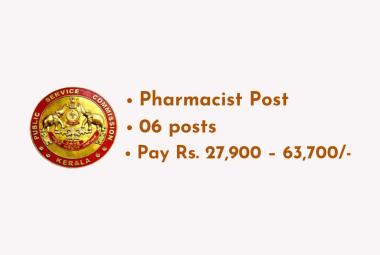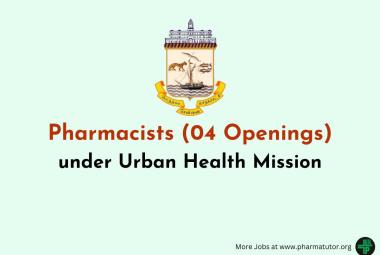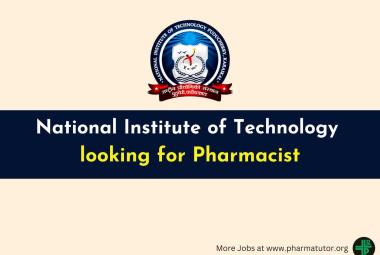About Authors:
Patel Punita s*, Patel Brilina M, Arora Bhoomi
Institute of clinical research India
ahmedabad, Gujarat
*punitapatel_icri@ymail.com
Abstract:
Bullous Pemphigoid (BP) is an autoimmune subepidermal blistering disease appearing predominantly in the elderly. Bullous Pemphigoidcharacterized by an autoimmune response to 2 hemidesmosomal proteins within the dermal–epidermal junction, These proteins, called BP antigen 1 (BPAG1 or AgBP230), and BPAG2 (or AgBP180 or collagen XVII) have respective molecular masses of 230 and 180. While BP180 is a transmembrane glycoprotein with an extracellular domain BP230 localizes intracellularly and associates with the hemidesmosomal plaque. The disease is characterized clinically by tight bullae, with clear content, often large, developing primarily on the edge of erythematous plaques. Intense itching is common. The disease is primarily treated with systemic corticosteroids. Now,The increased knowledge of the development of noveltherapeutic strategies for Bullous Pemphigoids.
[adsense:336x280:8701650588]
Reference Id: PHARMATUTOR-ART-1329
Introduction:
In 1953, Lever [1] was the first to distinguish, on the basis of distinctive clinical and histological features, bullous pemphigoid (BP) from pemphigus. In 1967, Jordon et al [2].demonstrated by immunofluorescence analysis that patients with bullous pemphigoid (BP) produce circulating autoantibodies directed against the cutaneous basement membrane zone. Bullous Pemphigoid (BP) is a subepidermal autoimmune disease presenting as pruritus, papulovesicles and tenseblisters[3]. Autoantibodies mainly IgG (rarely IgM, IgE) in BP are directed against two hemidesmosomalproteins designated BP230 and BP180[4].The autoantibodies are localized in vivoalong the epidermal basement membrane. Bullous Pemphigoid is mostly found in the elderly. However, cases have also been reported in children[5].Bullous pemphigoid is not only the most common disorder but also represents the most frequent autoimmune blistering disease in general. In this review, we will focus on recent progress in our understanding of the novel drug therapy of bullous pemphigoid.
Pathophysiology:
Auto-antibodies are directed against 2 hemidesmosomal proteins, designated BP180 and BP230. While BP230 localises intracellularly and associates with the hemidesmosomal plaque, BP180 is a transmembrane glycoprotein with an extracellular domain consisting of approximately 1000 amino acids. The non-collagenous 16A domain that encompasses 76 amino acids and localises directly adjacent to the transmembrane region has been identified as an immunodominant region of the BP180 ectodomain [6].
In most bullous pemphigoid sera, circulating antibodies to BP180NC16A are detected with serum levels correlating with disease activity[7]. Bullous pemphigoid auto-antibodies (with the help of complement activation), the infiltration of inflammatory cells, and the release of proteases and various inflammatory mediators, including cytokines, are essential for lesion formation[8][9]. Further studies using a similar approach revealed that antihuman BP180NC16A antibodies and neutrophils are responsible for this tissue injury [10].Using an IgG passive transfer approach, there exists in vivo evidence that rabbit antibodies directed against the murine BP180NC16A homologue are pathogenic in mice [11]. These in vitro and in vivo data demonstrate that antibodies specific for the BP180NC16A domain are pathogenic. It is clear that the binding of anti-BP180 antibody to its target is the critical first step in sub-epidermal blister formation in bullous pemphigoid. It is unclear as to the sub-class of IgG that is pathogenic and directly related to the severity of the disease. New findings identify anti-BP180-N IgG1 auto-antibodies as the predominant IgG sub-class associated with acute onset of bullous pemphigoid. Because IgG1 antibodies are capable of fixing complement, the link between anti-BP180 auto-antibodies and complement in their pathogenic role in bullous pemphigoid is revealed[12][13].
Bullous pemphigoid often provokes blood and tissue eosinophilia, which suggests chemoattractants may modulate the eosinophil infiltration. Eotaxin and interleukin (IL)-5 are strongly associated with the tissue eosinophilia of bullous pemphigoid. These findings suggest that eotaxin and IL-5 may be important for eosinophil migration in bullous pemphigoid lesions and that therapies that aim to inhibit production of eotaxin and IL-5 may improve inflammation and blister formation[14].
[adsense:468x15:2204050025]
Epidemiology
Bullous Pemphigoid is the most common autoimmune blistering disease in the West with an estimated incidence of six to seven cases per million population per year in France and Germany[15][16].The prevalence of bullous pemphigoid in the US is reported as 6 to 10 cases per million with a mean age of onset of 65 years[17][18]. North East Scotland appears to have a relatively high incidence of bullous pemphigoid (14 cases per million per year) when compared with incidence rates in continental Europe[19].It occurs equally in both sexes and is usually a disease of the elderly (> 70 years) but can also affect younger patients and children[5]. Men are more frequently affected than women[17][20].BP has been reported in association with malignancies; however, most large series have concluded that there is no increased incidence of malignancy in patients with Bullous Pemphigoid in western countries compared with age- and sex-matched controls[21].
Clinical symptoms:
The disease is characterized clinically by tight bullae, with clear content, often large, developing primarily on the edge of erythematous plaques[22]. Intense itching is common. Mouth sores and bleeding gums are also common. The lesions are symmetrical with a predilection for the flexor sides of the limbs, the anterior-internal face of the thighs and abdomen. Mucosal lesions are rare, predominantly affecting the buccal mucosa (10-20% of the cases). Nikolsky's sign is absent. The disease progresses by successive bouts, the bullae healing without scarring. Affect on the patient's general status is variable; it depends on the extent of the lesions, and the severity and duration of itching. Oral lesions consist of small blisters orerosions and are found mainly on the palatal mucosa.The blister formation may be preceded by an urticarialor eczematous rash. The degree of itch varies fromnone to intense and may precede the appearance ofblisters by weeks, months or occasionally years.
NOW YOU CAN ALSO PUBLISH YOUR ARTICLE ONLINE.
SUBMIT YOUR ARTICLE/PROJECT AT articles@pharmatutor.org
Subscribe to PharmaTutor Alerts by Email
FIND OUT MORE ARTICLES AT OUR DATABASE
Treatment:
The aim of treatment is to suppress the clinical signs of Bullous Pemphigoid sufficiently to make the disease tolerable to an individual patient (reduction of blister formation, urticarial lesions and pruritus). The prognosis of Bullous Pemphigoid is poor, since the 1-year mortality rate has been reported to range from 25% to 40% in recent studies[23]. Patients with Bullous Pemphigoid are usually elderly, often on multiple therapies and at high risk of adverse drug reactions and side-effects. High doses of immunosuppressants may put these patients at risk of life-threatening adverse effects more dangerous than the Bullous Pemphigoid. The treatments available work via different mechanisms. Some aim to suppress the inflammatory process, suppress the production of the pathogenic antibodies.
Systemic corticosteroids most commonly used are prednisolone and prednisone, and dosages relate to these drugs unless otherwise stated. Typical recommendations for widespread disease are for a starting daily dose of about 1 mg/kg continued until cessation of new blister formation, then gradually decreased according to clinical course[24][25][26].A retrospective study of 23 patients treated with prednisone 1 mg/kg daily showed a significant correlation between the pretreatment number of blisters and the time needed to achieve control[25].Aggressive treatment in eight elderly patients with intravenous methylprednisolone 750–1800 mg daily reduced blistering within 24 h, although subsequent morbidity was severe[27].Systemic corticosteroid therapy seems the best established initial treatment for Bullous Pemphigoid.
Topical corticosteroids are likely to be most useful for localized and mild to moderate disease. They may be a useful adjunct to systemic treatment[28]. A recent publication by Joly
et al[29] also supports the use and benefits of topical corticosteroids as a sole treatment in moderate and severe disease, and highlights the mortality associated with high-dose oral corticosteroids. Long-term use of oral corticosteroids can cause weakening of the bones (osteoporosis), diabetes, high blood pressure, high cholesterol, cataracts and other serious side effects and long-term use of topical corticosteroids can cause thinning of the skin and other skin problems.
Antibiotics and nicotinamide are useful first line treatments that may spare some patients from immunosuppressant therapy[30].Tetracyclines (oxytetracycline, minocycline or doycycline) may be prescribed as sole agents or in combination with niacinamide. In local or mild disease, tetracyclines may provide disease control without resorting to systemic prednisolone. In moderate disease, tetracyclines in combination with prednisolone may have a steroid sparing action. We use minocycline (50-100mg/d) or oxytetracycline (500-1000mg/d) when minocycline-induced pigmentation is a problem. Tetracycline is not suitable in renal impairment and doxycycline and minocycline should be avoided in liver impairment. Erythromycin is another option that may be particularly effective in children[31].Compare to systemic corticosteroids antibiotics has a less side effects. Tetracyclines and nicotinamide should be consideredfor treatment in adults, perhaps in combinationwith topical corticosteroids. Tetracyclineshould be avoided in renal impairment anddoxycycline and minocycline in patients with hepaticimpairment. Minocycline should be stopped if hyperpigmentationoccurs. A few cases of minocyclineassociatedpneumonia and eosinophilia are described,necessitating immediate withdrawal of minocycline. Whenblister formation is suppressed sufficiently the antibiotics and nicotinamide must be reduced slowly, one at a time, over several months to avoid relapse[32].
Azathioprine is most commonly used drug in BP. Azathioprine is only considered as a second-line treatment to prednisolone where response has been inadequate and either the disease is not suppressed or the side-effects are troublesome and unacceptable. Azathioprine dose should be optimized both with regard to efficacy and myelosuppression risk by prior measurement of thiopurine methyltransferase (TMPT) activity, although this test is not universally available[32].
Dapsone and sulphonamides should be considered only if other treatments are ineffective or contraindicated[32]. Immunomodulatory treatments such as cyclophosphamide, cyclosporin, mycophenolate mofetil, methotrexate, chlorambucil, intravenous immunoglobulin may be useful in individual resistant cases.
New approach drug: Rituximab
Rituximab B-lymphocytes. This biological agent activates complement-dependent cytotoxicity and binds to human Fc receptors, mediating cell death through antibody-dependent cellular toxicity[33].It could offer a safe and effective therapeutic alternative for refractory Bullous Pemphigoid[34].
Rituximab is an immunoglobulin G1 (IgG1) kappa monoclonal antibody composed of a murine variable region (Fab portion) that is fused on to a human constant region (Fc portion). The Fab portion binds specifically to the CD20 antigen, located exclusively on the surface of pre-B and mature B lymphocytes. Once bound, the Fc portion of rituximab recruits immune effector cells to help mediate cell lysis of the CD20+ B lymphocytes via 3 possible mechanisms; they are complement-dependent cytotoxicity (CDC), antibody-dependent cell-mediated cytotoxicity (ADCC) and apoptosis[35].
The exact contribution of each mechanism remains unclear, and different mechanisms may prevail in different diseases[36].The use of rituximab results in the rapid depletion of both normal and malignant CD20+ B lymphocytes in the peripheral blood and, to a lesser extent, the lymph nodes. The CD20 antigen is not expressed on the surface of hematopoietic stem cells or pro-B cells; thus, the capacity of these precursor cells to regenerate the B lymphocyte population remains intact. As the majority of plasma cells fail to express the CD20 antigen, plasma cells are generally spared and serum immunoglobulin levels tend not to fall dramatically[37].
In patients receiving rituximab intravenously, serum levels are dose-proportional, correlate with patient response to therapy, and increase with each successive infusion[37][38][39].The half-life of rituximab is also proportional to the dose, increases with each subsequent infusion, and varies greatly from patient to patient. The wide variability in elimination half-lives may reflect differences in tumor burden and changing CD20+ B cell populations with repeated administrations. Though the mechanisms involved in the metabolism and elimination of rituximab are not fully understood, it is postulated that rituximab is degraded nonspecifically in the liver and excreted in the urine[40].
In adults, the standard dosing schedule for rituximab is 375mg/m2 given intravenously once per week for 4 consecutive weeks. Premedication with an antipyretic (i.e., acetaminophen) and an antihistamine (i.e., diphenhydramine) should be administered prior to and throughout each infusion to reduce the likelihood of infusion-related reactions[41].In order to minimize the risk of tumor lysis syndrome, bulky tumors require higher doses of rituximab to be staggered over several weeks. As there is a limited number of CD20+ B cells in the normal immune system, an alternate dosing regimen was developed for patients with rheumatoid arthritis (RA). In RA patients, rituximab may be given as two-1000mg intravenous infusions separated by 2 weeks[42]. Recently, a few cases of primary cutaneous B-cell lymphoma have been treated successfully with intralesional injections of rituximab. The dose ranged from 1-3mL of a 10mg/mL solution and variable numbers of injections were administered[43]-[46].Rituximab is currently supplied at a concentration of 10mg/mL in either 100mg (10mL) or 500mg (50mL) single-use vials[41].
Rituximab is generally well tolerated, though most patients experience mild-to-moderate infusion-related reactions with their first treatment. The most common symptoms include fever (48%), chills (32%), weakness (18%), nausea (17%), headache (13%), pruritus (12%), and rash (11%)[41].The symptoms are usually reversible by temporarily discontinuing the infusion and providing symptomatic relief. Infusion-related side-effects tend to diminish or disappear with subsequent infusions.Severe and potentially fatal adverse events, though rare, have been associated with rituximab therapy. These include severe infusion-related reactions, tumor lysis syndrome, mucocutaneous reactions such as Stevens-Johnson Syndrome (SJS), anaphylaxis, serious pulmonary events, cardiac arrythmias, renal failure, hematological abnormalities, bowel obstruction/perforation, and significant infections, such as bacterial sepsis, reactivation of hepatitis B with fulminant hepatitis, and progressive multifocal leukoencephalopathy (PML)[41]. With regard to PML, a recent safety warning was issued by the US FDA regarding the development of this potentially fatal viral infection in the central nervous system (CNS) in 2 patients with systemic lupus erythematosus (SLE) who were being treated with rituximab[47]. Patients should be urged to seek prompt medical attention if they develop any new neurological symptoms (i.e., changes in vision, balance, or cognition). The use of rituximab in children and in patients with renal or hepatic failure has not been studied extensively. Rituximab should be avoided during pregnancy unless the potential benefit justifies the potential risk to the fetus (Pregnancy Risk Category C). As human IgG is excreted in breast milk, lactating mothers should be advised to discontinue nursing until circulating blood levels are no longer detectable. Though there have been no formal drug interaction studies performed with rituximab, the concomitant use of rituximab and cisplatin should be avoided as this combination has been associated with renal failure[41].
Conclusion:
Bullous pemphigoid is a distressing blistering skin disease. Blisters are often preceded by a prebullous prodrome. Topical and systemic glucocorticoids form the mainstay of treatment. Evidence for the effectiveness of most second-line drugs is limited and many have worrying side-effect profiles. The typical age range and associated frailty of affected patients places them at risk of treatmentrelated complications that must be closely monitored for during all phases of treatment. Treatment with tetracycline and nicotinamide forbullous pemphigoid is effective. This is a useful alternative treatmentespecially in the elderly whose medical conditionspreclude the use of corticosteroids.In most patients, rituximab is safe and tolerable with infusion-related reactions and infectious complications dominating the adverse-event profile.
References:
1. Lever WF (1953) Pemphigus. Medicine 32:2–132
2. Jordon RE, Beutner EH, Witebsky E, Blumenthal G, Hale WF, Lever WF (1967) Basement membrane antibodies in bullous pemphigoid. JAMA 200:751–756
3. Zillikens D. Acquired skin disease of hemidesmosomes. J Dermatol Sci 1999; 20:134-54.
4. Giudice GJ, Emery DF, Diaz LA. Cloning and primary structural analysis of the bullous pemphigoid, BP 180. J Invest Dermatol 1992; 99:243-50.
5. Erbagci Z. Childhood bullous pemphigoid following hepatitis B immunization. J Dermatol. 2002; 29:781-5.
6. Guidice GI, Emery DJ, Zelickson BD, et al. Bullous pemphigoids and herpes gestationis autoantibodies recognize a common non-collagenous site on the BP 180 ectodomain J Immunol. 1993; 151: 5742-5750.
7. Haase C, Budinger L, Borradori L, et al. Detection of IgG autoantibodies in the sera of patients with bullous and gestational pemphigoid: ELISA studies utilizing a baculovirus-encoded form of bullous pemphigoids antigen 2. J Invest Dermatol. 1998; 110: 282-286.
8. Schmidte, Brocker EB, Zillikens D. New aspect on the pathogenesis of bullous pemphigoid. Hautarzt 2000; 51: 637-645.
9. Gammon WR, Merritt CC, Lewis DM, et al. an in vitro model of immune complex- mediated basement membrane zone separation caused by pemphigoid antibodies, leukocytes, and complement. J Invest Dermatol. 1982; 78: 285-290.
10. Sitaru C, Schmidt E, Petermann S, et al. autoantibodies to bullous pemphigoids antigen 180 induce dermal-epidermal separation in cryosection of Human Skin. J Invest Dermatol. 2002; 118: 664-671.
11. Liu Z, Diaz LA, Troy JL, et al. a passive transfer model of the organ-specific Autoimmune disease, Bullous Pemphigoids, using antibodies generated against the hemidesmonal antigen, BP 180. J clin Invest. 1993; 92: 2480-2488.
12. Liu Z. Are anti-BP 180 IgG1 or IgG4 autoantibodies pathogenic? J invest Dermatol 2002; 119: 989-990.
13. Hofmann S, Thoma- Uszynski S, Hunziker T, et al. Severity and phenotype of bullous pemphigoids relate to autoantibody profile against the NH-2 and COOH- terminal Regions of the BP 180 ectodomain. J Invest Dermatol. 2002; 119: 1065-1073.
14. Wakugawa M, Nakamura K, Hino H, et al. Elevated Level of eotaxin and interleukin-5 in blister fluid of bullous pemphigoids: Correction with tissue eosinophilia. Br J Dermatol. 2000; 143: 112-116.
15. Bernard P, Vaillant L, Labeille B et al. Incidence and distribution of subepidermal autoimmune bullous skin diseases in three French regions. Arch Dermatol 1995; 131: 48–52.
16. Zillikens D, Wever S, Roth A et al. Incidence of autoimmune subepidermal blistering dermatoses in a region of Central Germany. Arch Dermatol 1995; 131: 957–8.
17. Yeh SW,Ahmed B, Sami N, et al. Blistering Disorders: diagnosis and treatment. Dermatol Ther. 2003; 16: 214-223.
18. Korman NJ. Bullous Pemphigoid. The latest in diagnosis, Prognosis, and therapy. Arch Dermatol. 1998; 134: 1137-1141.
19. Gudi VS, White MI, Cruickshank N, et al. Annual incidence and mortality of bullous pemphigoid in the Grampian region of north –east Scotland. Br J dermatol. 2005; 153: 424- 427.
20. Jung M, Kippes W, Messer G, et al, Increased Risk of Bullous Pemphigoid in Male and very old patients: A Population- based study on incidence. J Am Acad Dermatol. 1999; 41: 266-268.
21. Venning VA, Wojnarowska F. The association of bullous pemphigoid and malignant disease: a case control study. Br J Dermatol 1990; 123: 439–45.
22. Lever WF. Pemphigus and pemphigoid : a review of the advances made since 1964. J Am Acad Dermatol 1979; 1:2-30.
23. Pascal J, Benichou J, Lok C, et al. Prediction of survival in patients with bullous pemphigoid. A prospective study. Arch. Dermatol. 2005;141:691-698.
24. Guillaume J-C, Vaillant L, Bernard P et al. Controlled trial of azathioprine and plasma exchange in addition to prednisolone in the treatment of bullous pemphigoid. Arch Dermatol 1993; 129: 49–53.
25. Chosidow O, Saada V, Diquet B et al. Correlation between the pretreatment number of blisters and the time to control bullous pemphigoid with prednisone 1 mg ⁄ kg ⁄ day. Br J Dermatol 1992; 127: 185–95.
26. Fine J-D. Management of acquired bullous skin diseases. N Engl J Med 1995; 333: 1475–84.
27. Siegel J, Eaglstein WH. High-dose methylprednisolone in the treatment of bullous pemphigoid. Arch Dermatol 1984; 120: 1157–65
28. Loche F, Bazex J, Giard A et al. Efficacy and tolerability of topical corticosteroid treatment in the initial phase of bullous pemphigoid: an open study of 13 cases. J Dermatol Treat 1995; 6: 69–72.
29. Joly P, Roujeau JC, Benichou J et al. A comparison of oral and topical corticosteroids in patients with bullous pemphigoid. N Engl J Med 2002; 346: 321–7.
30. Hornschuh B, Hamm H, Wever S, et al. Treatment of 16 patients with bullous pemphigoid with oral tetracycline and niacinamide and topical clobetasol. J Am Acad Dermatol 36(1):101-3 (1997 Jan).
31. Altomare G, Capella GL, Fracchiolla C, Frigerio E. Treatment of bullous pemphigoid with erythromycin: a reappraisal. Eur J Dermatol 9(7):583-5 (1999 Oct-Nov).
32. Guidlines for the managements of bullous pemphigoids ( F Woinarowska, G Kirtschiq, AS Highet, VA Vening, NP khumalo) BJD, Vol. 147, No.2, Augest) 2002 (P 214-221)- British Association of Dermatologists.
33. Golay J, Lazzari M, Facchinetti V, et al. (2001) CD20 levels determine the in vitro susceptibility to rituximab and complement of B – cell chronic lymphocytice leukaemia: Further regulation by CD55 and CD59. Blood 98: 3383-3389.
34. Reguiaï Z, Tchen T, Perceau G, Bernard P.Service de dermatologie, hôpital Robert-Debré, CHU de Reims, 51092 Reims cedex, France. zreguiai@chu-reims.fr
35. Reff ME, Carner K, Chambers KS, et al. Depletion of B cells in vivo by a chimeric mouse human monoclonal antibody to CD20. Blood 83(2):435-45 (1994 Jan).
36. Graves JE, Nunley K, Heffernan MP. Off-label uses of biologics in dermatology: rituximab, omalizumab, infliximab, etanercept, adalimumab, efalizumab, and alefacept (part 2 of 2). J Am Acad Dermatol 56(1):e55-79 (2007 Jan).
37. Maloney DG, Liles TM, Czerwinski DK, et al. Phase I clinical trial using escalating single-dose infusion of chimeric anti-CD20 monoclonal antibody (IDEC-C2B8) in patients with recurrent B-cell lymphoma. Blood 84(8):2457-66 (1994 Oct).
38. Berinstein NL, Grillo-López AJ, White CA, et al. Association of serum rituximab (IDEC-C2B8) concentration and anti-tumor response in the treatment of recurrent low-grade or follicular non-Hodgkin’s lymphoma. Ann Oncol 9(9):995-1001 (1998 Sep).
39. McLaughlin P, Grillo-López AJ, Link BK, et al. Rituximab chimeric anti-CD20 monoclonal antibody therapy for relapsed indolent lymphoma: half of patients respond to a four-dose treatment program. J Clin Oncol 16(8): 2825-33 (1998 Aug).
40. Cartron G, Blasco H, Paintaud G, Watier H, Le Guellec C. Pharmacokinetics of rituximab and its clinical use: thought for the best use? Crit Rev Oncol Hematol 62(1):43-52 (2007 Apr).
41. Canadian Pharmacists Association. Compendium of pharmaceuticals and specialties: the Canadian drug reference for health professionals. Toronto: Canadian Pharmacists Association (2006).
42. Cohen SB, Emery P, Greenwald MW, et al. Rituximab for rheumatoid arthritis refractory to anti-tumor necrosis factor therapy: results of a multicenter, randomized, double-blind, placebo-controlled, phase III trial evaluating primary efficacy and safety at 24 weeks. Arthritis Rheum 54(9):2793-806 (2006 Sep).
43. Heinzerling L, Dummer R, Kempf W, Schmid MH, Burg G. Intralesional therapy with anti-CD20 monoclonal antibody rituximab in primary cutaneous B-cell lymphoma. Arch Dermatol 136(3):374-78 (2000 Mar).
44. Paul T, Radny P, Krober SM, Paul A, Blaheta HJ, Garbe C. Intralesional rituximab for cutaneous B-cell lymphoma. Br J Dermatol 144(6):1239-43 (2001 Jun).
45. Roguedas AM, Watier H, Paintaud G, de Muret A, Vaillant L, Machet L. Intralesional therapy with anti-CD20 monoclonal antibody rituximab: local and systemic efficacy in primary cutaneous B-cell lymphoma. Br J Dermatol 152(3):541–4 (2005 Mar).
46. Kerl K, Prins C, Saurat JH, French LE. Intralesional and intravenous treatment of cutaneous B-cell lymphomas with the monoclonal anti-CD20 antibody rituximab: report and follow-up of eight cases. Br J Dermatol 155(6):1197-200 (2006 Dec).
47. FDA warns of safety concern regarding rituxan in new patient.
Received on 27th Jun, 2012 | Published on 18th Jul, 2012
NOW YOU CAN ALSO PUBLISH YOUR ARTICLE ONLINE.
SUBMIT YOUR ARTICLE/PROJECT AT articles@pharmatutor.org
Subscribe to PharmaTutor Alerts by Email
FIND OUT MORE ARTICLES AT OUR DATABASE









